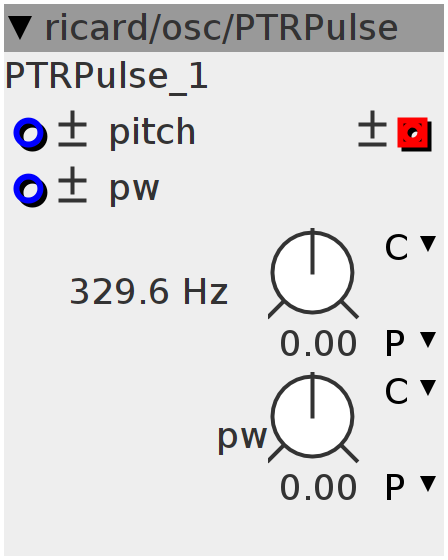PTRPulse
Low CPU Anti Aliased Pulse Wave oscillator using third order Polynomial Transition Region algoiritm.
Inlets
frac32.bipolar pitch
frac32.bipolar pw
Outlets
frac32buffer.bipolar sawtooth wave
Parameters
frac32.s.map.pitch default pitch
frac32.s.map default pulse width
Declaration
float p, p1, pw, dp, dp2, y, D;
Init
p = 0;
Control Rate
int32_t idp;
MTOFEXTENDED(param_pitch + inlet_pitch, idp);
dp = idp * (0.25f / (1 << 30));
dp2 = dp + dp; // 2*dp
pw = 0.5f + ((float)(param_pw + inlet_pw)) / (1 << 28);
Audio Rate
p += dp;
p -= (p > 1);
// The caveat here is that with extremely narrow pulse widths,
// we need to calculate the correction factors for both up- and
// downgoing edges on the same sample. That also means we need to
// separate the trivial wave from the antialias corrections.
if (p < pw)
y = -1;
else
y = 1; // trivial wave
// start of wave, high-to-low transition always.
if (p < dp2) {
if (p < dp) {
D = p / dp;
y += -D * D + 2;
} // D0 down
else {
D = p / dp;
y += D * (D - 4) + 4;
} // D1 down
}
// variable position (i.e. PW) low-to-high transition
p1 = p - pw + (p < pw); // '+ (p < pw)' takes care of correction zone wrapping
// past waveform period
if (p1 < dp2) {
if (p1 < dp) {
D = p1 / dp;
y += D * D - 2;
} // D0 up
else {
D = p1 / dp;
y += D * (4 - D) - 4;
} // D1 up
}
outlet_pulse = (int32_t)(y * (1 << 27));